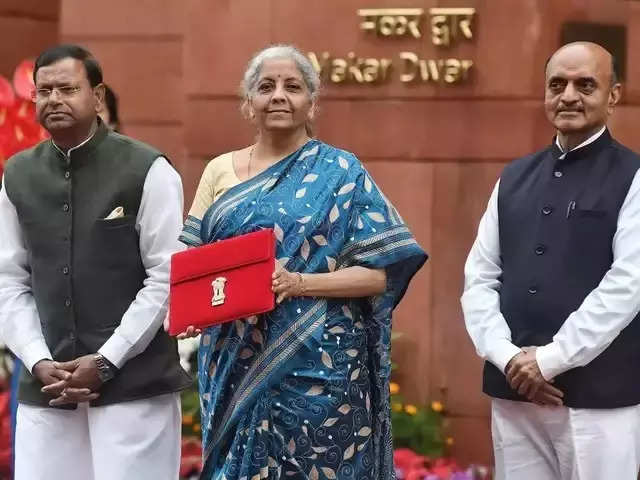
The Union Budget 2025 lays down the trajectory of national growth through demand stimulation, investment, and inflation control. With an ambitious focus on boosting consumer spending in urban areas through tax reductions and increased public expenditure, the budget aspires to invigorate economic activity.
As urban wage earners find themselves with more disposable income, their spending potential rises, theoretically fueling production, employment, and overall economic momentum. The government’s strategic capital investments promise infrastructural advancements and long-term benefits. However, this seemingly positive cycle carries an inherent challenge: the increased circulation of money raises the specter of inflation.
If unchecked, inflationary pressure can erode consumer purchasing power, diminishing the intended effects of economic stimulation. The balancing act between fostering demand and controlling inflation is a delicate one, requiring careful navigation by policymakers.While urban areas thrive under these budgetary provisions, the rural economy faces a different reality.
The disparity in demand stimulation between urban and rural populations becomes apparent when rural areas, plagued by low incomes and economic stagnation, fail to witness the same level of economic revival. If demand remains concentrated in urban regions, it exacerbates existing economic inequalities and leads to an unbalanced growth trajectory. Rural demand stimulation is not just desirable—it is essential for inclusive economic progress.
A comprehensive approach must involve targeted policies that directly empower rural populations. Employment generation schemes, enhanced Minimum Support Prices (MSP) for farmers, and microfinance initiatives for small-scale rural enterprises can help bridge the economic divide. By directing financial resources towards rural infrastructure and agricultural modernization, the government can ensure a more equitable distribution of economic benefits, fostering a more balanced demand pattern nationwide.
The infusion of additional money into the economy—whether through wage increases, tax cuts, or public expenditure—brings with it the risk of inflation. As prices of goods and services rise, the initial benefits of increased income diminish, leaving consumers reluctant to spend. This paradox undermines the fundamental purpose of demand stimulation: if consumers are discouraged by inflation, they may opt to save rather than spend, slowing down economic momentum.
A key factor in inflation management is ensuring that the supply side of the economy keeps pace with rising demand. Without an increase in the availability of goods and services, excessive liquidity merely leads to price hikes. The government must proactively bolster production and supply chains to sustain economic stability and maintain the purchasing power of consumers. There is surely a need to enhance and deepen the productivity linked incentives particularly for demand based innovative industries.
To strike a balance between demand stimulation and inflation control, a nuanced and phased approach is necessary. Several possible measures in this regard include the following:
- Rural-Centric Stimulus Policies: Introducing direct stimulus packages for rural employment, MSP enhancements, and infrastructure development ensures broader economic participation. Strengthening rural demand will create a ripple effect, bolstering industrial and service sectors alike.
- Gradual and Phased Public Spending: Injecting capital into the economy should be strategic rather than abrupt. A phased implementation of infrastructural projects and economic investments can prevent sudden inflationary spikes, allowing for a steady and sustainable economic boost.
- Supply-Side Strengthening: To counter inflationary pressures, the government must ensure that supply grows in tandem with demand. Investments in agricultural efficiency, industrial expansion, and logistical improvements can prevent shortages and keep prices in check.
- Monetary-Fiscal Coordination: The Reserve Bank of India (RBI) plays a pivotal role in balancing inflation and liquidity. By fine-tuning interest rates and engaging in strategic liquidity control measures, the RBI can mitigate inflationary risks while allowing for continued economic expansion.
- Encouraging Savings and Investments: To prevent excessive liquidity from driving inflation, the government should introduce attractive savings instruments such as tax-free bonds, fixed deposits with high returns, and investment-friendly policies that divert funds into long-term assets rather than short-term spending.
- Leveraging Technology and Digitalization: Digital taxation systems and fintech innovations can optimize revenue collection while reducing tax evasion. Furthermore, increased efficiency in digital transactions can facilitate smoother economic operations, mitigating inflationary bottlenecks.
- Strengthening Public Distribution Systems (PDS): A robust PDS ensures that essential commodities remain accessible and affordable to vulnerable populations. By minimizing wastage, enhancing efficiency, and preventing hoarding, a strong distribution network can protect the economically weaker sections from inflationary shocks.
- Trade Diversification and Industrial Growth: To mitigate supply-side vulnerabilities, the government must diversify trade partnerships, encourage domestic manufacturing, and reduce dependency on imports. Supporting industries such as semiconductor manufacturing, pharmaceuticals, and renewable energy can bolster national self-sufficiency and stabilize market fluctuations.
The Union Budget’s vision of demand stimulation is an admirable step toward economic resurgence, yet it must be paired with strategic safeguards against inflation. A balanced economic expansion, one that nurtures both urban and rural demand, is imperative to ensure long-term stability.
Through phased public investment, supply-side reinforcements, and robust monetary policies, the government can navigate the intricate balance between growth and inflation. The proposed innovation fund of Rs 20000/ crore should be prioritised to achieve this balance on a sustainable basis, and with a higher multiplier effect.
A well-calibrated and nuanced approach that integrates fiscal responsibility with progressive economic measures will lead the country towards a resilient, inclusive, and prosperous future. By addressing the economic needs of all sections of society and ensuring that inflation does not erode economic gains, the government can achieve a sustainable and equitable growth trajectory, fostering prosperity for generations to come.
(The author is an IAS officer (retired); Views expressed are personal)


